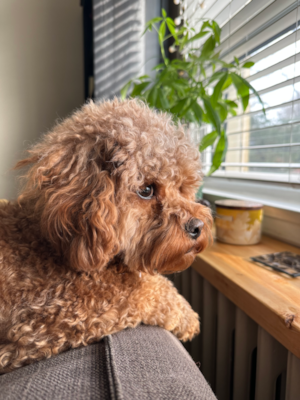
Choosing the right dog can be a big decision, especially with so many breeds and variations available. The Cavapoo, a mix between a Cavalier King Charles Spaniel and a Poodle, has become a favorite for many because of its friendly nature and low-shedding coat. If you're considering a Cavapoo, it's important to understand the different generations that come with it, as this can affect everything from the dog's coat to its temperament.
In this beginner’s guide, we'll break down the various Cavapoo generations, such as F1, F1b, F2, and beyond. Each generation has its unique characteristics, including size, temperament, hypoallergenic qualities, shedding levels, and coat type. We'll also explain the mix of Cavalier King Charles Spaniel and Poodle DNA in each generation. This information is vital for potential Cavapoo owners to find a dog that fits their lifestyle and preferences.
Whether you're looking for a specific coat type, concerned about allergies, or just trying to find the best fit for your family, understanding Cavapoo generations will help you make an informed choice.
Table of Contents
What are Cavapoo Generations?
When you start exploring the world of Cavapoos, you'll encounter terms like "F1", "F2", "F1b", and so on. These terms refer to the different generations of Cavapoos, indicating their lineage and the specific mix of Cavalier King Charles Spaniel and Poodle genetics they carry.
The Meaning of "F" and Numbers
The "F" in these generational terms stands for "filial", which is a Latin word meaning "son" or "daughter". It is used in genetics to denote the generation of offspring relative to their parents. The number that follows the "F" indicates the generation of the Cavapoo in question.
Quick breakdown of known Cavapoo Generations
F1 Cavapoos: This is the first generation Cavapoo, resulting from a direct cross between a purebred Cavalier King Charles Spaniel and a purebred Poodle. F1 Cavapoos are 50% Cavalier King Charles Spaniel and 50% Poodle. F1 Cavoodles are known for their variability in coat type, shedding levels, and hypoallergenic qualities.
F1b Cavapoos: The "b" stands for "backcross". An F1b Cavoodle is the result of breeding an F1 Cavapoo back to a purebred Poodle, making them 75% Poodle and 25% Cavalier King Charles Spaniel. This first-generation backcross is often sought after for its increased hypoallergenic qualities and more predictable, low-shedding coat.
F1bb Cavapoos: This generation involves breeding an F1b Cavapoo back to a purebred Poodle again, increasing the Poodle genetics to 87.5%. These Cavapoos are even more likely to have the non-shedding, hypoallergenic coat that many owners desire.
F2 Cavapoos: F2s are the offspring of two F1 Cavapoos. This second generation Cavapoo can have a wide range of coat types, shedding, and hypoallergenic qualities, making them less predictable than the F1 or F1b generations.
F2b and F2bb Cavapoos: Similar to the F1b and F1bb, these second-generation backcrosses involve backcrossing F2 Cavapoos to Poodles to enhance hypoallergenic and non-shedding qualities.
F3 or Multigenerational Cavapoos: These are Cavapoos bred from F2 or higher-generation Cavapoos. They can also be the result of breeding two F1b or F2b Cavapoos. Multigenerational breeding aims to stabilize traits such as coat type, shedding levels, and hypoallergenic qualities.
RELATED: Are Cavapoos Hypoallergenic?
Cavapoo Generations Explained
F1 Cavapoo
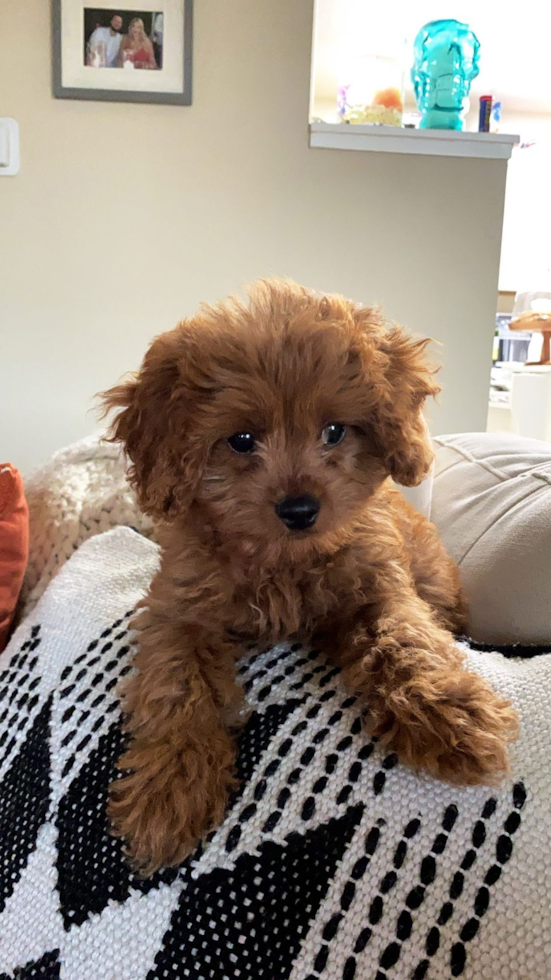
Possible F1 Cavapoo Appearance
The F1 Cavapoo marks the first generation in the Cavapoo breeding spectrum. This generation results from directly crossing a purebred Cavalier King Charles Spaniel with a purebred Poodle. The offspring, F1 Cavapoos, inherit a 50% genetic contribution from each parent breed, combining both the Cavalier King Charles Spaniel's and the Poodle's most cherished traits.
Size and Temperament
F1 Cavapoos generally weigh between 9 to 25 pounds, depending on the size of the Poodle parent (toy, miniature, or standard). They exhibit a friendly and affectionate temperament, making them excellent companions for families, singles, and seniors alike. Their intelligence and eagerness to please derive from both parent breeds, facilitating ease of training.
Hypoallergenic Qualities and Shedding
The hypoallergenic qualities of F1 Cavapoos can vary. While Poodles are known for their low-shedding, hypoallergenic coats, Cavalier King Charles Spaniels shed more regularly. Therefore, F1 Cavapoos may or may not inherit the hypoallergenic coat of the Poodle parent. Their shedding levels are generally low to moderate, making them a suitable option for families with mild allergies.
Coat Type
The coat of an F1 Cavapoo can range from the curly Poodle coat to the straighter Cavalier coat, with many puppies exhibiting a soft, wavy coat that falls somewhere in between. The variety in coat types means that grooming requirements can vary significantly within the generation, with some Cavapoos requiring regular grooming to prevent matting and others needing only moderate care.
Parents and DNA Percentages
F1 Cavapoos are the direct offspring of one Cavalier King Charles Spaniel parent and one Poodle parent, making their DNA exactly 50% of each breed. This precise mix contributes to the F1 generation's popularity, offering a balanced blend of both breeds' physical and behavioral characteristics.
RELATED: F1 Cavapoo Guide
F1b Cavapoo
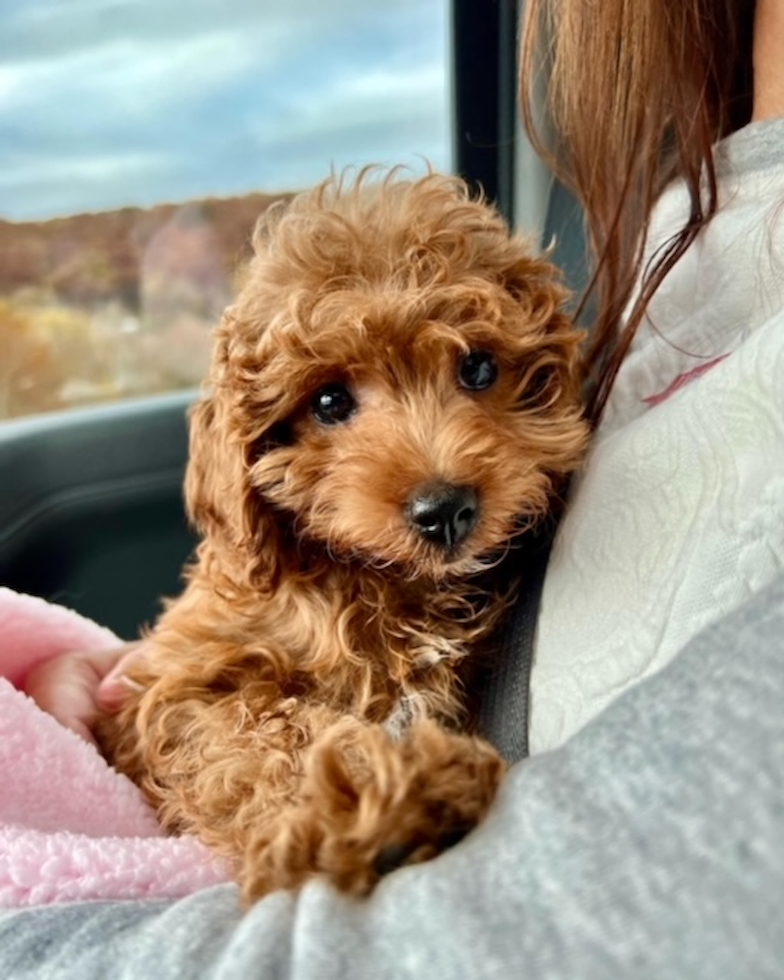
Possible F1b Cavapoo Appearance
The F1b Cavapoo generation takes a step further in achieving the hypoallergenic and non-shedding qualities many owners desire. This generation is created by breeding an F1 Cavapoo back to a purebred Poodle. This results in offspring that are 75% Poodle and 25% Cavalier King Charles Spaniel. The additional Poodle genetics not only enhance the hypoallergenic properties but also contribute to a more predictable coat type.
Size and Temperament
Similar to the F1 generation, the size of an F1b Cavapoo can vary but generally falls within the 9 to 25-pound range. Their temperament leans more towards the Poodle's side, with a high level of intelligence, a friendly nature, and an energetic demeanor. F1b Cavapoos are known for their trainability and affectionate disposition, making them great companions for active families or individuals.
Hypoallergenic Qualities and Shedding
Thanks to the increased presence of Poodle genetics, F1b Cavapoos typically exhibit strong hypoallergenic qualities, making them an ideal choice for individuals with allergies. Their shedding is minimal, and many F1b Cavapoos are considered non-shedding, significantly reducing the amount of dander and hair in the home.
Coat Type
The coat of an F1b Cavapoo is usually curly or wavy, mirroring the Poodle's coat more closely than the Cavalier's. This generation's coat is often softer and fuller, requiring regular grooming to prevent matting and maintain its condition. The variety in coat colors and patterns is broad, including cream, gold, red, black, and sometimes multi-colored patterns.
Parents and DNA Percentages
An F1b Cavoodle is the result of breeding an F1 Cavapoo (50% Cavalier King Charles Spaniel and 50% Poodle) back to a purebred Poodle, making the genetic makeup of F1b Cavapoos approximately 75% Poodle and 25% Cavalier King Charles Spaniel. This backcrossing technique is a strategic approach to enhancing the Poodle's desirable traits, especially regarding the coat and allergen levels.
RELATED: F1b Cavapoo Guide
F1bb Cavapoo
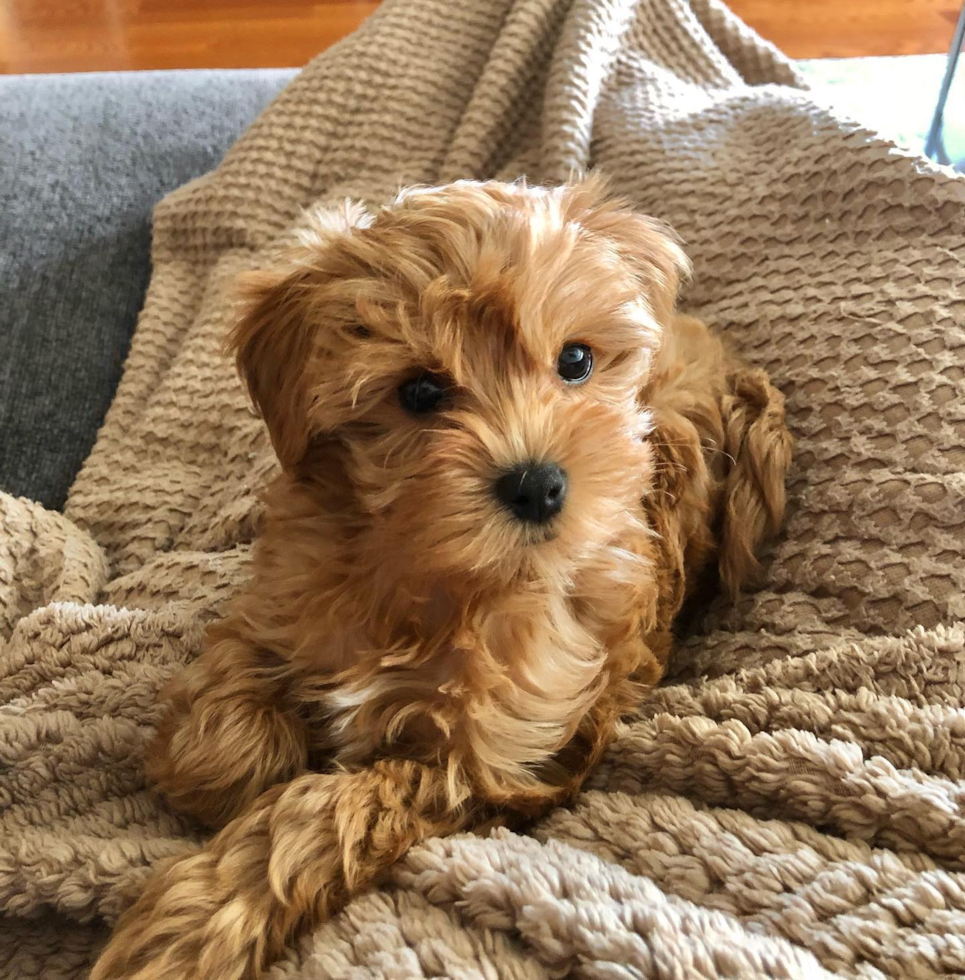
Possible F1bb Cavapoo Appearance
The F1bb Cavapoo generation is created by breeding an F1b Cavapoo back to a purebred Poodle once again. This results in puppies that are 87.5% Poodle and 12.5% Cavalier King Charles Spaniel. This generation emphasizes the Poodle's hypoallergenic qualities even more, making F1bb Cavoodles an excellent choice for individuals with severe allergies.
Size and Temperament
F1bb Cavapoos typically range in size from 8 to 20 pounds, closely mirroring the size of their F1 and F1b counterparts. Their temperament is highly influenced by the Poodle's characteristics, including a high degree of intelligence, loyalty, and a playful nature.
Hypoallergenic Qualities and Shedding
With the highest percentage of Poodle genetics among the early generations, F1bb Cavapoos are among the most hypoallergenic and non-shedding of the Cavapoo varieties. They produce minimal dander and hair, significantly reducing allergic reactions for sensitive individuals.
Coat Type
The coat of an F1bb Cavapoo is predominantly curly, resembling that of the Poodle, and comes in a wide range of colors. This generation's coat requires regular grooming to maintain its shape, prevent tangles, and keep it clean and healthy. The emphasis on Poodle genetics ensures a consistent, low-maintenance coat ideal for allergy sufferers.
Parents and DNA Percentages
By breeding an F1b Cavapoo (75% Poodle and 25% Cavalier) back to a purebred Poodle, the F1bb Cavapoos inherit an approximate genetic makeup of 87.5% Poodle and 12.5% Cavalier King Charles Spaniel. This selective breeding strategy is designed to solidify the hypoallergenic coat traits while still retaining some of the Cavalier's friendly and affectionate demeanor.
RELATED: Learn About the Cavapoo’s Temperament
F2 Cavapoo
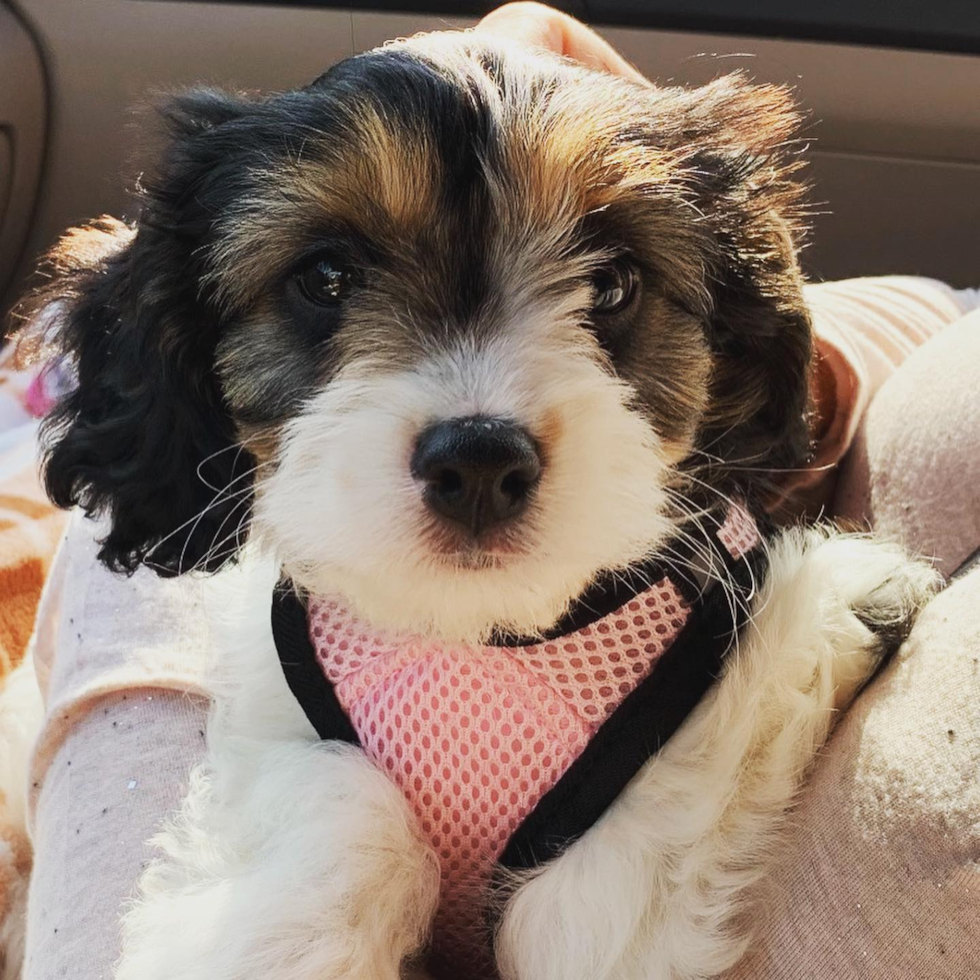
Possible F2 Cavapoo Appearance
The F2 Cavapoo generation is produced by breeding two F1 Cavapoos together. This generation represents a second filial generation, retaining a blend of 50% Cavalier King Charles Spaniel and 50% Poodle genetics, similar to the F1 generation. However, the mix in the F2 generation can result in a greater variation in traits compared to the F1 Cavapoos due to the way genes recombine during breeding.
Size and Temperament
The size of F2 Cavapoos remains within the range of 9 to 25 pounds, consistent with the F1 and F1b generations. Their temperament is highly variable, inheriting a mix of characteristics from both the Cavalier King Charles Spaniel and the Poodle. Generally, F2 Cavapoos are known for their friendly, affectionate nature and intelligence, but the exact balance of these traits can vary more in this second generation.
Hypoallergenic Qualities and Shedding
The hypoallergenic qualities and shedding levels of F2 Cavapoos are less predictable than in the F1b and F1bb generations. While some F2 Cavapoos may inherit the Poodle's low-shedding, hypoallergenic coat, others may have a coat that sheds more and resembles the Cavalier's. This makes the F2 generation a bit of a gamble for individuals with allergies.
Coat Type
The coat type of F2 Cavapoos can range widely from curly to straight, with many having a wavy texture that falls somewhere in between. This variation means that grooming requirements can differ significantly within the generation, with some F2 Cavapoos needing extensive grooming to manage their coats, while others may require less maintenance.
Parents and DNA Percentages
F2 Cavapoos are the direct offspring of two F1 Cavapoos, each with a 50% mix of Cavalier King Charles Spaniel and Poodle genetics. This breeding results in puppies that also have a 50/50 genetic split, but the expression of these genetics can vary widely due to the second level of mixing, leading to the increased variability in this generation.
RELATED: F2 Cavapoo Guide
F2b Cavapoo
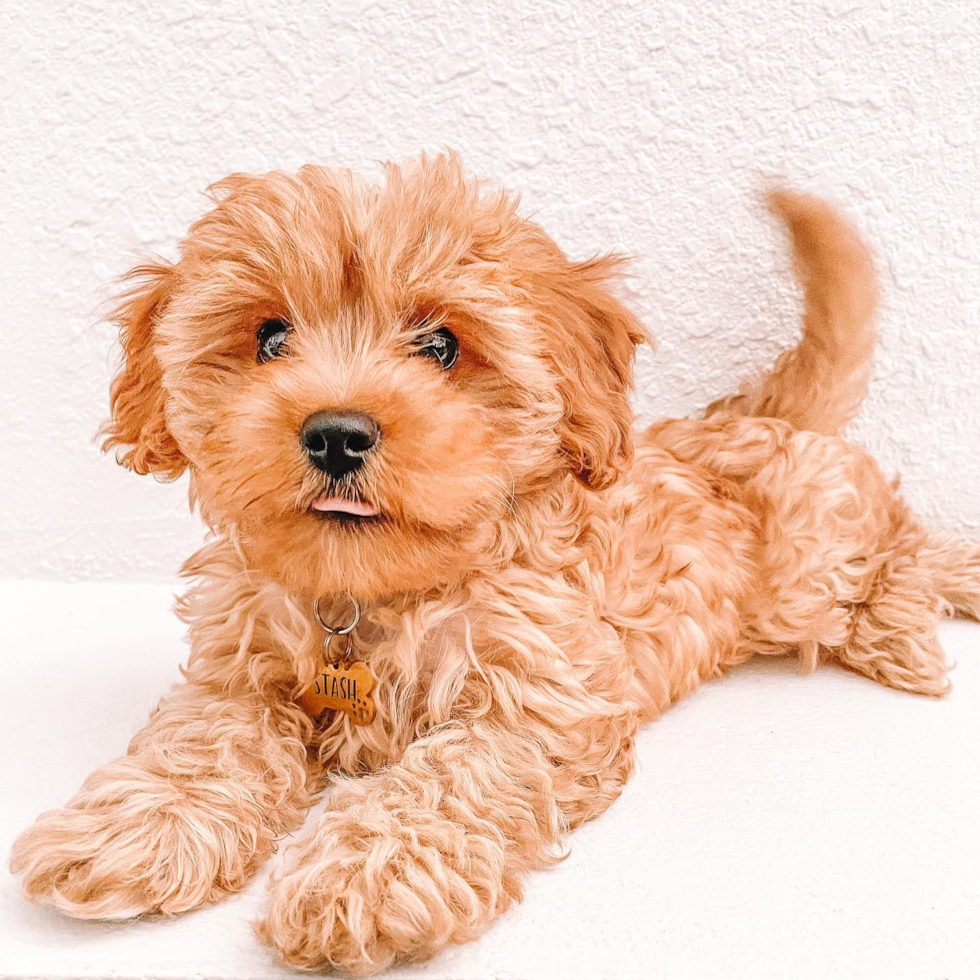
Possible F2b Cavapoo Appearance
The F2b Cavapoo represents an advanced step in the breeding process, aimed at enhancing the hypoallergenic properties and coat quality of the Cavapoo line. This second-generation backcross is produced by breeding an F2 Cavapoo (second-generation Cavapoo) back to a purebred Poodle, resulting in a mix that is approximately 62.5% Poodle and 37.5% Cavalier King Charles Spaniel. This blend seeks to balance the desirable traits of both parent breeds, with a slight emphasis on the Poodle's characteristics.
Size and Temperament
F2b Cavapoos typically maintain the size range seen in previous generations, usually weighing between 9 to 25 pounds. Their temperament tends to be a harmonious blend of the Poodle's intelligence and the Cavalier's affectionate nature, making them excellent companions. They are known for their sociability, adaptability, and ease of training, thanks to the intelligent and eager-to-please traits inherited from both parent breeds.
Hypoallergenic Qualities and Shedding
The increased percentage of Poodle genetics in F2b Cavapoos contributes to better hypoallergenic qualities compared to the F1 and F2 generations. They are more likely to have a low-shedding coat, which is beneficial for allergy sufferers. However, as with all mixed breeds, there can be variation within the generation regarding how hypoallergenic individual dogs are.
Coat Type
The coat of an F2b Cavoodle is generally curly or wavy, reflecting the Poodle's influence. This generation's coat can come in a wide variety of colors and patterns and requires regular grooming to prevent matting and maintain its appearance. The emphasis on Poodle genetics in the F2b generation usually results in a coat that is manageable for families with mild to moderate allergies.
Parents and DNA Percentages
An F2b Cavapoo is the offspring of an F2 Cavapoo and a purebred Poodle. This breeding choice is designed to reinforce the Poodle's hypoallergenic coat characteristics while maintaining some of the Cavalier King Charles Spaniel's desirable physical and temperamental traits. The result is an F2b Cavapoo dog with approximately 62.5% Poodle and 37.5% Cavalier genetics.
RELATED: Cutest Cavapoo Colors
F2bb Cavapoo
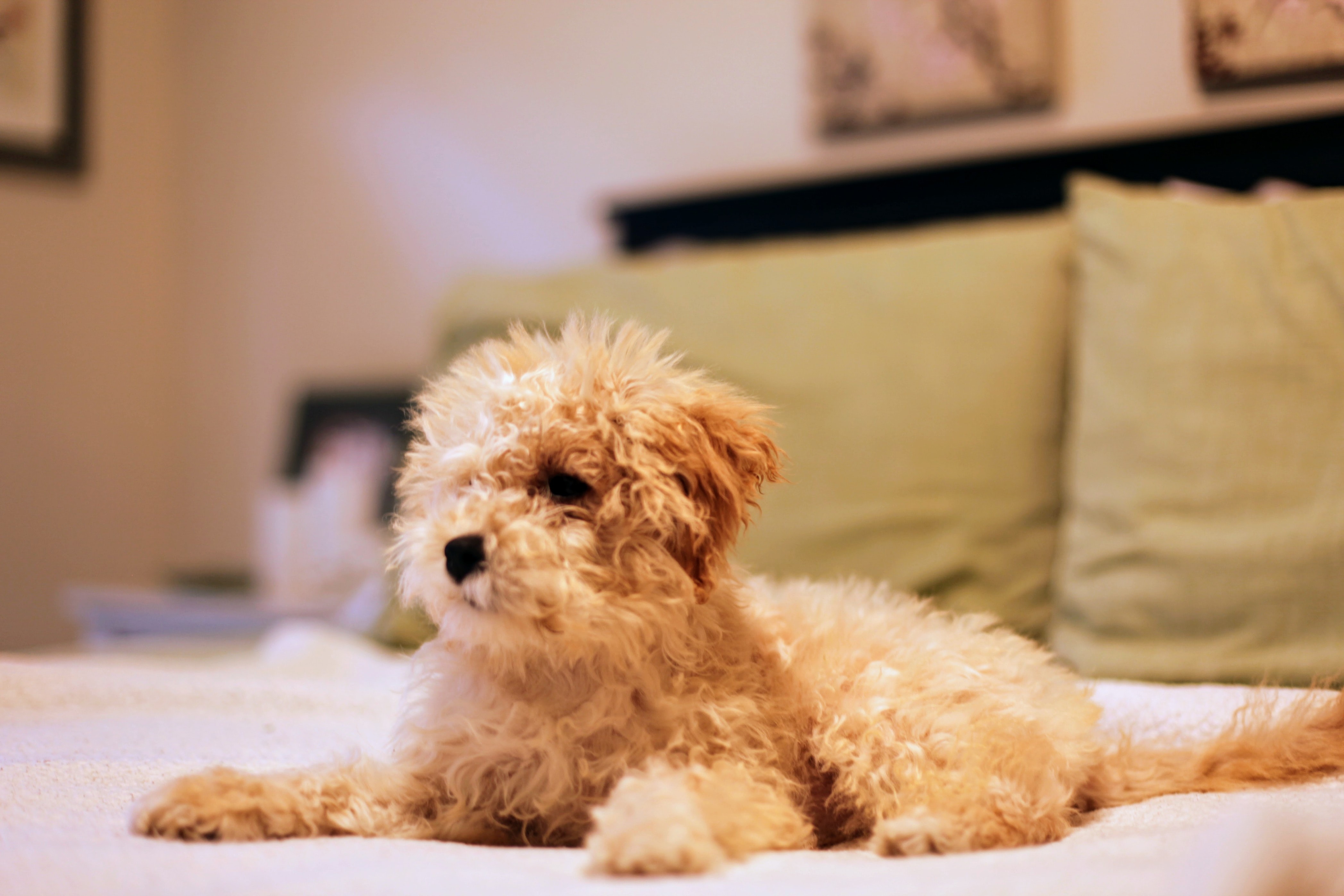
Possible F2bb Cavapoo Appearance
The F2bb Cavapoo generation takes the hypoallergenic and non-shedding qualities to the next level by further increasing the Poodle's genetic influence. This generation is created by backcrossing an F2b Cavapoo with a purebred Poodle, resulting in offspring that are approximately 81.25% Poodle and 18.75% Cavalier King Charles Spaniel. This selective breeding approach aims to solidify the desirable hypoallergenic traits while still retaining the charming personality traits of the Cavalier.
Size and Temperament
F2bb Cavapoos generally fall within the same size range as their predecessors, typically weighing between 9 to 25 pounds. Their temperament is heavily influenced by the Poodle's characteristics, including high intelligence, alertness, and an energetic yet affectionate nature. They tend to be highly trainable, social, and adaptable.
Hypoallergenic Qualities and Shedding
With the highest percentage of Poodle genetics among the F2 generations, F2bb Cavoodles exhibit excellent hypoallergenic qualities, making them one of the best choices for individuals with severe allergies. They are known for their minimal shedding, significantly reducing the presence of allergens in the home.
Coat Type
The coat of an F2bb Cavapoo typically leans towards the curly side, mirroring the Poodle's coat more closely than the straighter coat of the Cavalier. Their coats require regular grooming to prevent matting and to keep them looking their best. The emphasis on Poodle genetics ensures that the F2bb Cavapoo's coat is not only hypoallergenic but also varied in color and pattern, offering a wide range of aesthetic options for prospective owners.
Parents and DNA Percentages
An F2bb Cavapoo is the result of breeding an F2b Cavapoo (which already has a higher percentage of Poodle genetics) back to a purebred Poodle. This breeding strategy maximizes the Poodle's hypoallergenic coat traits in the offspring, resulting in a genetic makeup of approximately 81.25% Poodle and 18.75% Cavalier King Charles Spaniel.
RELATED: Cavapoo Grooming Guide
F3 Cavapoo
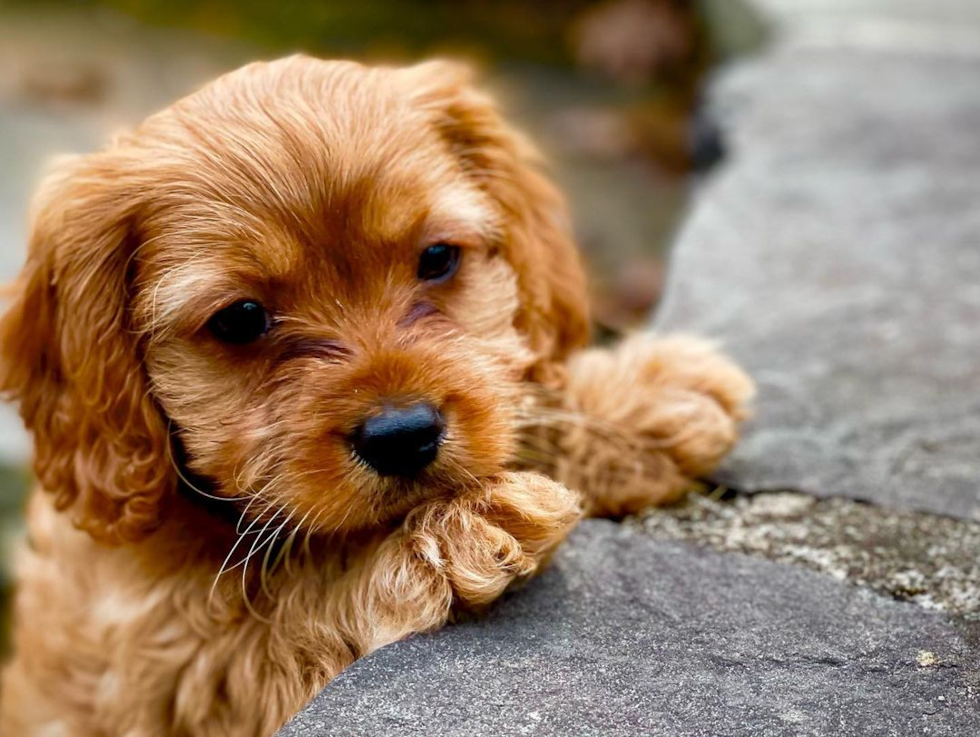
Possible F3 Cavapoo Appearance
F3 Cavapoos, or third-generation Cavapoos, are the result of breeding two F2 Cavapoos together, or in some cases, an F2 Cavapoo with an F1b or F2b Cavapoo. This generation represents a further blend of the Cavalier King Charles Spaniel and Poodle genetics, potentially offering a more balanced mix of traits from both breeds. The genetic composition of F3 Cavapoos can be quite varied, depending on the specific lineage of their parents.
Size and Temperament
The size of F3 Cavapoos remains within the familiar range of 9 to 25 pounds, although individual sizes can vary based on the dominant breed in their lineage. Their temperament is a complex mix of the friendly and affectionate nature of the Cavalier King Charles Spaniel and the intelligence and energy of the Poodle. This makes F3 Cavapoos adaptable, sociable, and trainable pets, suitable for a variety of family settings and lifestyles.
Hypoallergenic Qualities and Shedding
The hypoallergenic qualities and shedding levels of F3 Cavoodles can be less predictable than in earlier generations due to the increased genetic diversity. Some F3 Cavapoos may inherit a more hypoallergenic coat similar to the Poodle's, while others may have a coat that sheds more, akin to the Cavalier's. Potential owners interested in F3 Cavapoos for their hypoallergenic traits should inquire about the specific lineage and coat types of the parents to gauge the likely characteristics of their puppy.
Coat Type
The coat type of F3 Cavapoos can range from curly and wavy to straight, reflecting the varied genetic contributions from both the Cavalier King Charles Spaniel and the Poodle. The diversity in coat types means that grooming requirements can also vary widely within this generation, from regular brushing and grooming to manage curls and prevent matting, to simpler care for straighter coats.
Parents and DNA Percentages
F3 Cavapoos are bred from various combinations of F2, F1b, and F2b Cavapoos, leading to a wide range of genetic percentages from both the Cavalier King Charles Spaniel and the Poodle. This mix results in a less predictable but potentially more balanced genetic makeup.
RELATED: Cavapoo Training Guide
F4 and Multigenerational Cavapoo
F4 Cavapoo
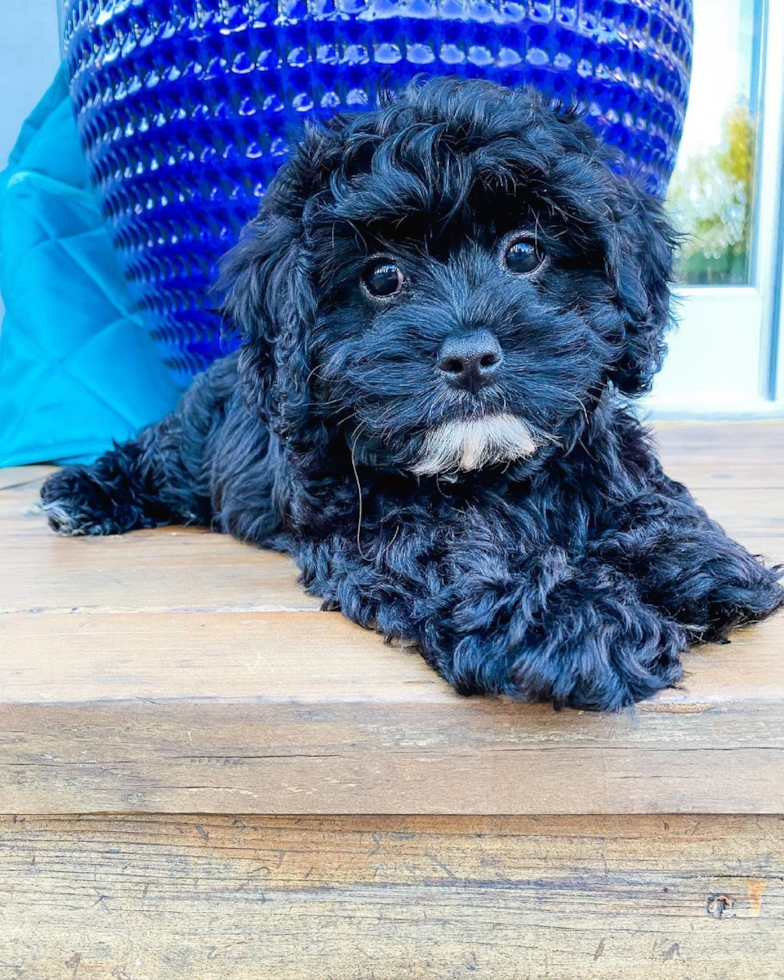
Possible F4 Cavapoo appearance
F4 Cavapoos are the fourth generation in the Cavapoo breeding line, created by breeding two F3 Cavapoos. By this stage, breeders aim to solidify the desirable traits seen in earlier generations, such as temperament, coat type, and hypoallergenic qualities. F4 Cavapoos can offer a more predictable outcome in these areas, reflecting the cumulative breeding efforts to enhance the best qualities of both the Cavalier and the Poodle.
Size and Temperament
The size of F4 Cavoodles continues to range between 9 to 25 pounds, maintaining the breed's characteristic adaptability to various living situations. Their temperament is expected to be well-balanced, combining the affectionate and gentle nature of the Cavalier with the Poodle's intelligence and vitality. This makes them highly trainable, sociable, and excellent companions for families, singles, and seniors alike.
Hypoallergenic Qualities and Shedding
F4 Cavapoos are bred with the intention of maximizing hypoallergenic traits, resulting in minimal shedding and dander production. This generation is likely to be suitable for families with moderate to severe allergies.
Coat Type
The coat of an F4 Cavapoo is typically curly or wavy, reflecting a higher degree of influence from the Poodle's hypoallergenic coat. Regular grooming is necessary to maintain their coat's health and appearance.
RELATED: 10 Pros & Cons of Owning a Cavapoo
Multigenerational Cavapoo
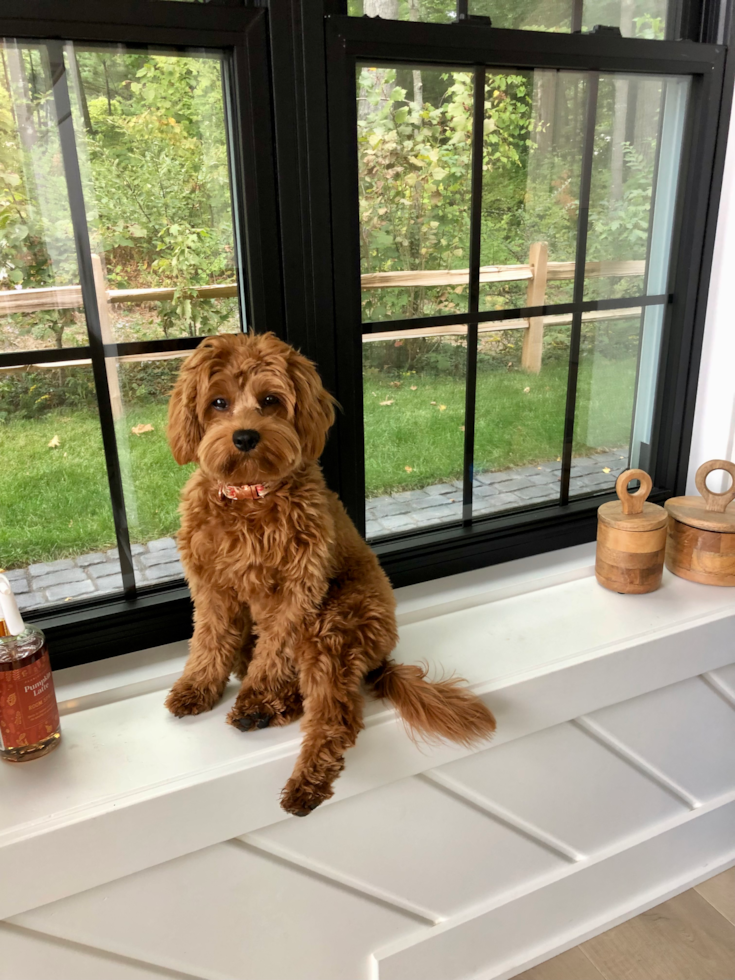
Possible Appearance of a Multigenerational Cavapoo
Multigenerational Cavapoos are bred from F4 or higher-generation Cavapoos. This category represents the ongoing effort to establish and maintain specific breed standards, including but not limited to hypoallergenic qualities, coat type, size, and temperament. Multigenerational breeding allows for the refinement of the Cavapoo as a breed, striving for consistency in physical and behavioral traits across litters.
Size and Temperament
Multigenerational Cavoodles maintain the size range typical to the breed, with their temperament being notably stable and predictable. These dogs are characterized by their friendly disposition, intelligence, and adaptability, making them ideal pets for a wide range of households.
Hypoallergenic Qualities and Shedding
With each successive generation, breeders aim to solidify the Cavapoo's status as a hypoallergenic breed. Multigenerational Cavapoos are expected to exhibit low to non-existent shedding, making them one of the best options for individuals with allergies.
Coat Type
The coat of multigenerational Cavapoos is predominantly curly or wavy, requiring regular grooming. The focus on maintaining the hypoallergenic quality of the coat means that multigenerational Cavapoos are likely to have a coat that is easy to care for in terms of allergy management.
RELATED: 10 Reasons Why the Cavapoo is a Top Dog
Cavapoo Generations Chart
| Generation | Parents | DNA Percentage |
| F1 Cavapoo | Cavalier + Poodle | 50% Poodle - 50% Cavalier |
| F1b Cavapoo | F1 Cavapoo + Poodle | 75% Poodle - 24% Cavalier |
| F1bb Cavapoo | F1b Cavapoo + Poodle | 87,5% Poodle - 12,5% Cavalier |
| F2 Cavapoo | F1 Cavapoo + F1 Cavapoo | 50% Poodle - 50% Cavalier |
| F2b Cavapoo | F2 Cavapoo + Poodle | 62,5% Poodle - 37,5% Cavalier |
| F2bb Cavapoo | F2b Cavapoo + Poodle | 81,25% Poodle - 18,75% Cavalier |
| F3 Cavapoo | F2 Cavapoo + F2 Cavapoo | Can Vary |
| F4 Cavapoo | F3 Cavapoo + F3 Cavapoo | Can Vary |
| Multigenerational Cavapoo | Can Vary | Can Vary |
RELATED: See our available Cavapoo puppies for sale
Conclusion
We hope this guide has provided you with a clear understanding of Cavapoo generations and their characteristics, helping you on your journey to finding the perfect furry friend. Remember, each Cavapoo is unique, and the joy of getting to know your new companion is part of the adventure of pet ownership. Whichever generation you choose, your Cavapoo is sure to bring much love and joy into your home.
Scroll down to see FAQs about Cavapoo generations
What To Read Next
About F1 Cavapoos
15 Best Dog Breeds for First-Time Owners
Frequently Asked Questions
Is F1 or F1b Better for a Cavapoo? Choosing between an F1 and an F1b Cavapoo depends on your preferences for coat type and hypoallergenic qualities. F1 Cavapoos are a 50/50 mix of Cavalier King Charles Spaniel and Poodle, offering a balance of traits from both breeds. F1b Cavapoos have 75% Poodle genetics, making them more likely to have a hypoallergenic coat. If allergies are a concern, an F1b may be a better choice.
What is a Multigenerational Cavapoo? A multigenerational Cavapoo is one that is bred from F4 or higher-generation Cavapoos. These dogs benefit from several generations of selective breeding, aiming to stabilize desirable traits such as coat type, temperament, and hypoallergenic qualities.
What Does F1 Mean for Cavapoo? F1 stands for "first generation" in Cavapoos, indicating a puppy that is the direct offspring of a purebred Cavalier King Charles Spaniel and a purebred Poodle. This generation is valued for its balanced mix of both parent breeds' traits.
What is an F2 Cavapoo? An F2 Cavapoo is a second-generation Cavapoo, bred from two F1 Cavapoos. This generation can exhibit a wide range of traits from both the Cavalier and Poodle breeds, with somewhat less predictability in coat type and hypoallergenic qualities compared to the F1 and F1b generations.
What Does F1b Stand for in Cavapoos? F1b in Cavapoos stands for a backcross of an F1 Cavapoo to a purebred Poodle, making these dogs 75% Poodle and 25% Cavalier King Charles Spaniel. The "b" signifies "backcross." F1b Cavapoos are particularly sought after for their enhanced hypoallergenic coats.
What Generation Cavapoo is Best? The "best" generation of Cavapoo depends on individual preferences and needs. If hypoallergenic qualities and a non-shedding coat are priorities, F1b or higher generations may be more suitable. For those seeking a balanced mix of Cavalier and Poodle traits, an F1 Cavapoo might be ideal.
Which Cavapoo Generation is Best for Allergies? For allergies, F1b, F2b, and multigenerational Cavapoos are generally considered the best options due to their higher percentage of Poodle genetics, which contribute to a more hypoallergenic coat.
What is the Smallest Cavapoo Generation? The size of a Cavapoo doesn't vary significantly by generation but rather by the size of the Poodle parent (toy, miniature, or standard). Generally, all generations can range from small to medium-sized, depending on the specific parents.
What is an F4 Cavapoo? An F4 Cavapoo is a fourth-generation Cavapoo, bred from two F3 Cavapoos. This generation benefits from multiple generations of selective breeding, aiming to further stabilize the desirable traits of the breed.




